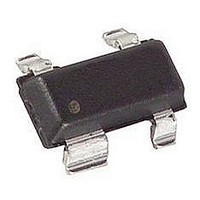HSMS-2825-TR1 Avago Technologies US Inc., HSMS-2825-TR1 Datasheet - Page 6

HSMS-2825-TR1
Manufacturer Part Number
HSMS-2825-TR1
Description
Diode
Manufacturer
Avago Technologies US Inc.
Specifications of HSMS-2825-TR1
Series Resistance @ If
12ohm
Peak Reflow Compatible (260 C)
No
Reel Quantity
3000
Pin Configuration
Unconnected Pair
Breakdown Voltage Min
15V
Leaded Process Compatible
No
Forward Voltage
340mV
Lead Free Status / RoHS Status
Contains lead / RoHS non-compliant
Available stocks
Company
Part Number
Manufacturer
Quantity
Price
Company:
Part Number:
HSMS-2825-TR1
Manufacturer:
HP
Quantity:
5 321
Company:
Part Number:
HSMS-2825-TR1
Manufacturer:
YEONHO
Quantity:
1 422
Part Number:
HSMS-2825-TR1
Manufacturer:
AGILENT
Quantity:
20 000
Company:
Part Number:
HSMS-2825-TR1G
Manufacturer:
WJ
Quantity:
15 000
Part Number:
HSMS-2825-TR1G
Manufacturer:
AGILENT
Quantity:
20 000
assures that the characteristics of
the two diodes are more highly
matched than would be possible
through individual testing and
hand matching.
Figure 13. Differential Detector.
Figure 14. Fabrication of Agilent
Diode Pairs.
In high power applications,
coupling of RF energy from the
detector diode to the reference
diode can introduce error in the
differential detector. The
HSMS-282K diode pair, in the six
lead SOT-363 package, has a
copper bar between the diodes
that adds 10 dB of additional
isolation between them. As this
part is manufactured in the
SOT-363 package it also provides
the benefit of being 40% smaller
than larger SOT-143 devices. The
HSMS-282K is illustrated in
Figure 15 — note that the ground
connections must be made as
close to the package as possible
to minimize stray inductance to
ground.
matching
network
bias
HSMS-2825
differential
amplifier
Figure 15. High Power Differen-
tial Detector.
The concept of the voltage
doubler can be applied to the
differential detector, permitting
twice the output voltage for a
given input power (as well as
improving input impedance and
suppressing second harmonics).
However, care must be taken to
assure that the two reference
diodes closely match the two
detector diodes. One possible
configuration is given in Fig-
ure 16, using two HSMS-2825.
Board space can be saved
through the use of the HSMS-282P
open bridge quad, as shown in
Figure 17.
Figure 16. Voltage Doubler
Differential Detector.
[3]
Detector,” to be published.
Hans Eriksson and Raymond W. Waugh, “A Temperature Compensated Linear Diode
PA
matching
network
bias
detector diode
reference diode
to differential amplifier
HSMS-282K
HSMS-2825
HSMS-2825
differential
amplifier
V
bias
Figure 17. Voltage Doubler
Differential Detector.
While the differential detector
works well over temperature,
another design approach
well for large signal detectors.
See Figure 18 for the schematic
and a physical layout of the
circuit. In this design, the two
4.7 KΩ resistors and diode D2 act
as a variable power divider,
assuring constant output voltage
over temperature and improving
output linearity.
Figure 18. Temperature Compen-
sated Detector.
In certain applications, such as a
dual-band cellphone handset
operating at both 900 and
1800 MHz, the second harmonics
generated in the power control
output detector when the handset
is working at 900 MHz can cause
problems. A filter at the output
can reduce unwanted emissions
at 1800 MHz in this case, but a
68 Ω
RF
HSMS-282K
HSMS-2825
in
matching
network
7
or
D1
33 pF
HSMS-282K
4.7 KΩ
bias
RF
4.7 KΩ
D2
HSMS-282P
V
in
o
[3]
68 Ω
differential
amplifier
works
4.7 KΩ
33 pF
V
o


























